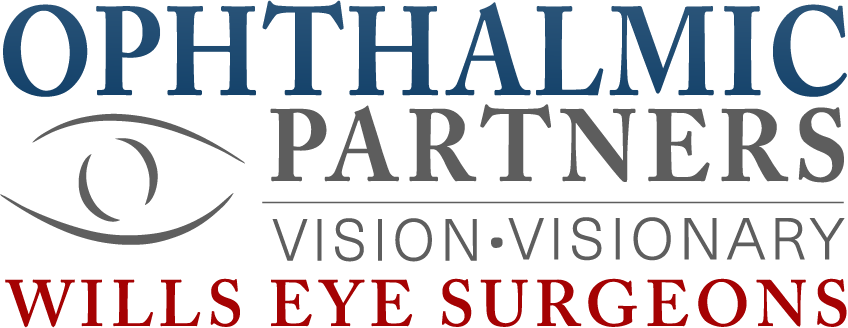Cataracts
Ophthalmic Partners treats cataracts for patients in Philadelphia, Pennsylvania and the surrounding communities.
We help you understand what cataracts are and thoroughly explain your treatment options.
WHAT IS CATARACT?
Just like a camera, the eye has a lens that is responsible for focusing light. When we look at something, light rays enter the eye and the lens focuses the image onto the retina at the back of the eye. The term cataract is used to describe a cloudy lens that can no longer focus the image properly. Vision becomes blurry, dim, or cloudy, and color intensity and brightness can be diminished, similar to the effect of looking through a dirty window.
Cataracts are one of the most common causes of vision loss. They affect about 1 in every 6 people over the age of 40, and by age 80 over half of all Americans have cataracts. A cataract is a progressive disease and is considered a normal part of the aging process. With age, the lens increases in thickness and weight, eventually changing the transparency of the lens.
WHAT CAUSES CATARACTS?
The two most common causes of cataracts are age and exposure to sunlight. Other causes may include eye injuries, certain medications, and chronic conditions, such as diabetes. Some children are born with cataracts.
WHAT ARE THE RISK FACTORS FOR CATARACTS?
The most common risk factors include diabetes mellitus, long-term corticosteroid use, and prior intraocular surgery. The incidence of cataracts is higher in certain chronic diseases associated with inflammation. There is also a link between smoking and lifetime exposure to ultraviolet-B radiation.
HOW CAN CATARACTS BE PREVENTED?
No conclusive evidence has shown that nutritional or vitamin supplementation can prevent or delay the onset or progression of cataracts, and no proven pharmacological treatments are available. Management of a visually significant cataract is surgical.
HOW ARE CATARACTS DIAGNOSED?
A diagnosis of cataracts begins with a thorough eye exam. During your exam, your eye doctor evaluates your vision and asks about any symptoms you may be experiencing. Explaining your family medical history is also a critical part of the diagnosis of cataracts. If you live with any chronic conditions, such as diabetes, please tell your eye doctor during your appointment. Your eye doctor may recommend additional tests to determine if you have cataracts or another condition affecting your vision.
HOW ARE CATARACTS TREATED?
Because the development of cataracts is gradual, vision changes may go unnoticed over time. Cataracts may not need to be immediately removed unless your lifestyle is becoming seriously impacted. Once you have been diagnosed with a cataract, however, your vision needs to be regularly monitored for changes. If cataracts become troublesome, your ophthalmologist may recommend surgical removal.
Ophthalmologists treat cataracts by removing the cloudy lens and replacing it with an implant called an intraocular lens (IOL). The most common type of IOL improves vision at only one focal point, and patients often continue to need glasses. Advanced Technology Intraocular Lenses can decrease the dependency on glasses after surgery and can also correct astigmatism and presbyopia.
Advances in laser technologies also provide cataract patients with treatment options. The LenSx laser system uses a 3-D platform that is used for refractive cataract surgery. LexSx is also effective for treating astigmatism.
Additional
Eye Disorders
Schedule an Appointment
Get Started
Early detection of eye disease is the best defense against vision loss, particularly for individuals over the age of 40. Should you experience any vision problems that could be an indicator of an eye disorder, contact one of our offices in Philadelphia, PA, Bala Cynwyd, PA, Media, PA, or Marlton, NJ, as soon as possible to book an assessment.
The eye doctors and surgeons at Ophthalmic Partners have the necessary expertise and experience to diagnose, manage, and treat complex eye disorders and diseases. Visit us today to keep your eyes healthy and your vision clear.

Pennsylvania:
(484) 434-2700
New Jersey:
(856) 596-1601